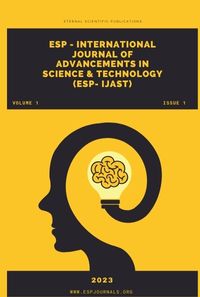ESP-International Journal Of Advancements In Science & Technology (ESP- IJAST)
Citation :
Tor, N.E.T., Adebambo, A.O., Ajibike, A.B., Mendy, E.W., Oladejo, O., Adeola, A.C., 2024. "Phylogenetic Polymorphisms of Gambian and Togolese Rural Chickens Assessed with Mitochondrial DNA" ESP International Journal of Advancements In Science & Technology (ESP- IJAST) Volume 2, Issue 2 : 1-6
.Abstract :
Gambia and Togo are geographically, two of the smallest of the sixteen-member block of Economic Community of West African States (ECOWAS). Like the rest of Africa, not much is known about the phylogenetic variations, evolution and molecular (DNA) signatures of the indigenous chicken populations of the two countries. To achieve this, genomic DNA was extracted from a total of 40 village chickens of both countries using FTA cards, following standard protocols. Sanger sequencing of the D-loop amplicons of the mitochondrial DNA was outsourced to StabVida Laboratory, Portugal, using specific primers. Multiple alignments of a final length of 920bp of the sequences with a reference sequence reveals 8 SNPs. Reconstruction of evolutionary origins using MEGA 7 and NETWORK 4.6 matrix suggests that Gambian and Togolese chickens are most likely of south Asian descent. Molecular indices revealed that the chickens in the two populations are of comparatively lower genetic diversity, nonetheless, the Gambian population was slightly more diverse than the Togolese. This finding may be employed in the genetic conservation strategies of chickens in the two countries.
References :
[1] Adebambo, A. O., Mobegi, V. A., Mwacharo, J. M., Oladejo, B. M., Adewale, R. A., Ilori, L. O., Makanjuola, B. O., Afolayan, O., Bjornstad, G., Jianlin, H. and Hanotte, O. 2010. Lack of phylogeographic structure in Nigerian village chickens revealed by mitochondrial DNA D-loop sequence analysis. International Journal of Poultry Science 9: 503 – 507.
[2] Eltanany, M.A and Hemeda, S.A. 2016. Deeper insight into maternal genetic assessments and demographic history for Egyptian indigenous chicken populations using mtDNA analysis. Journal of Advance Research, 7, 615-623.
[3] Food and Agriculture Organisation (FAO) 2007. Global Plan of Action for Animal Genetic Resources and the Interlaken Declaration. FOA, Rome, Italy.
[4] Tajima, F. 1996. The amount of DNA polymorphism maintained in a finite population when the neutral mutation rate varies among sites. Genetics 143: 1457-1465
[5] Miao,Y.W., Peng, M.S., Wu,G.S., Ouyang,Y.N., Yang,Z.Y.,Yu, N., Liang,J. P., Pianchou,G., Beja-Pereira,A., Mitra,B., Palanichamy,M.G., Baig,M., Chaudhuri, T. K., Shen,Y. Y.,Kong, Q. P., Murphy,R. W., Yao,Y. G. and Zhang,Y. P. 2013. Chicken domestication: an updated perspective based on mitochondrial genomes. Heredity. 110:277–282.
[6] Mtileni, B. J., Muchadeyi, F.C., Maiwashe, A., Phitsane, T. E., Halimani, M., Chimonyo, G. and Dzama, G. 2009. Characterisation of production systems for indigenous chicken genetic resources of South Africa. Appl. Anim. Husb. Rural Dev. 2:18–22.
[7] Mwacharo, J. M., Bjornstad, G., Mobegi, V., Nomura, K., Hanada, H., Amano, T., Jianlin, H and Hanotte, O. 2011. Mitochondrial DNAreveals multiple introductions of domestic chickens in East Africa.Mol. Phylogenet. Evol. 58:374–382.
[8] Osman, S.A.M., Yonezawa, T.and Nishibori, M. 2016.Origin and genetic diversity of Egyptian native chickens based on complete sequence of mitochondrial DNA D-loop region1. Poultry Science 95:1248–1256.
[9] Rikaterere, D. and Luseba, D. 2010.Ethnoveterinary Botanical Medicine: Herbal Medicines for Animal Health, CRC Press, 450pp.
[10] Tajima, F. 1996. The amount of DNA polymorphism maintained in a finite population when the neutral mutation rate varies among sites. Genetics 143: 1457-1465
Keywords :
Chicken, Gambia, Mitochondrial DNA, Phylogenetics, Togo.


